
CSA Week 26: Here's To You!
News
Expected Harvest
A Satisfying Finale!
by Farmer Dana
A Satisfying Finale!
by Farmer Dana
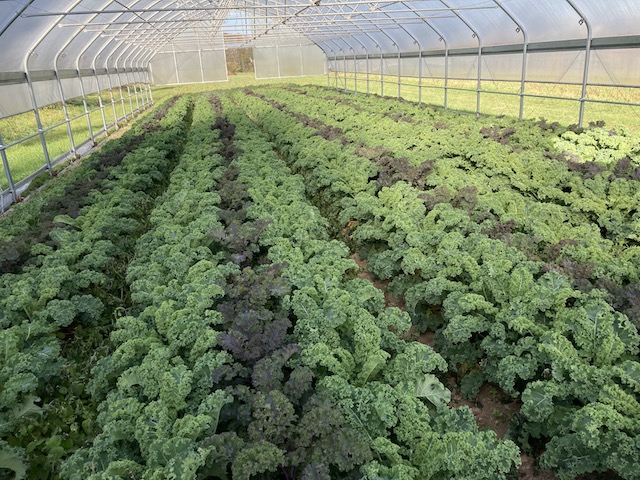
Gorgeous kale in the high tunnel!
Harvest #26 (Week B) should include sweet potatoes, potatoes, carrots, beets, radishes, kohlrabi, fennel, sweet peppers, hot peppers, garlic, lettuce mix, arugula, mustard greens, swiss chard, kale, and head lettuce. Some items will be a choice. U-pick should include some herbs.
*Sweet potatoes will be distributed in their natural harvested state (unwashed)*

Notes From The Field
Good Food Around the Bend
by Farmer Derek
Good Food Around the Bend
by Farmer Derek
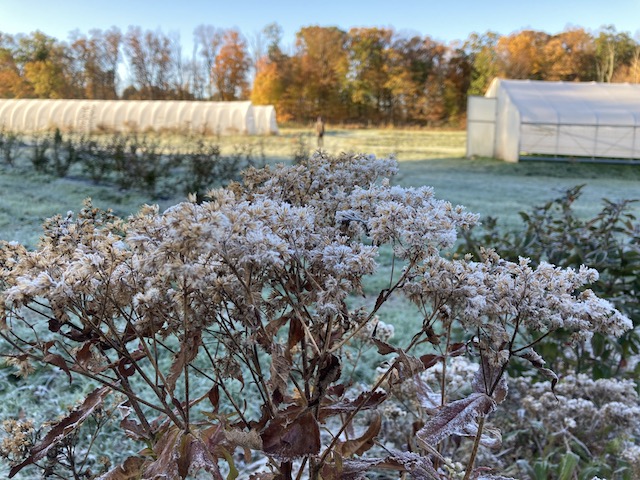
Frost hairs covered nearly everything on the farm 5 mornings in a row last week with temperatures bottoming out in the mid-20s.
Well that seemingly came out of nowhere! From no frosts to 5 consecutive frozen mornings just like that. Thankfully the crops we grow this time of year are hardy enough to tolerate this wild swing (sadly except for the lingering peppers). We hope for a slow transition to cold temperatures but this time around we bypassed the 30s and went right into the 20s. Praise be to the plants for getting through it unscathed. Since the original lows were forecast only for the low 30s we didn't take any extra precautions except for lowering the sides of the tunnels a bit but not all the way. I was surprised that first morning when the temperature obviously went much lower than the forecast 33 and woke up to a blanket of heavy frost and mildly frozen plants even in the tunnels. Just having that roof over their heads though keeps the frost from settling on top of the crops and burning the leaves, blemishing them and eventually causing that dead tissue to deteriorate. But by leaving the doors open and sides slightly up, enough subfreezing air crept in anyway giving them a good taste and wake up call for late fall and winter weather. If anything, it should help slow the growth of some of the tunnel crops that were speedily reaching for the sun during this overall balmy fall.
While mornings were too cold to comfortably do much outside and fields remained moist I spent a lot of time preparing plans and making purchases for next growing season. I like to do a lot of the crop planning early in the slower season while everything is still relatively fresh in my mind. I also reworked the spreadsheets for our seed information, greenhouse seeding, transplanting, and crop rotation bed feet data into one spreadsheet so I can basically update all of that simultaneously which will greatly expedite the process and limit my computer staring. It's also sort of necessary because I need to know how much of a crop and variety we're growing so I can most accurately order the correct number of seeds because we don't like to save seeds from one season to the next due to their sometimes unpredictable loss of viability. I do really enjoy planning the growing season from the comforts of a warm house with some good music going. Because we mostly grow annual crops we start fresh each year with expectations of perfection.
To hope for the best crops the following year we need to collect and record whatever data we can use to make good decisions and plan. Most of it begins with soil health, our number one resource. We collect soil samples in the early fall and send them to the lab for analysis. The results drive our inputs, highlighting mineral concentrations, organic matter, pH, etc. We couple the results with perceived health of cash crops and cover crops. Since our soils here have been managed organically for almost 20 years and we have tests going back that far, taken every three years, we have a good idea of the direction our farm management is going. Suffice it to say, our soils are in really good shape and we mostly just need to apply maintenance amounts of compost, fertilizers, and amendments. But because it's not only overall amounts but also ratios of the minerals, minor tweaking does take place here and there. For example, based on the this year's soil test, one of our fields is deficient in potassium relative to others and the organic fertilizer we'll add there next year will have more of that than say phosphorous. It's all a work in progress, but the goal is sustainability and regeneration.
Thank you for your support!

Final Work Opportunity!
by Farmer Derek
by Farmer Derek
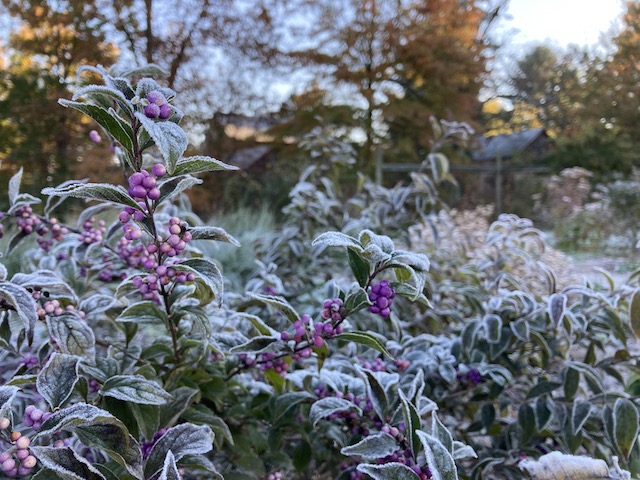
Frost all over the beautyberry.
This is the final week to work on the farm this season to satisfy the discount for your CSA share (if you signed up for a 'share with work discount that is')! We're planning to plant and mulch and possibly clean up some fence lines. The weather forecast looks perfect!
Workshift policy reminder: If you signed up for a share with work discount your share cost is reduced by $15 per worked hour (8 for Full, 6 for Medium, 4 for Half). If you're unable to satisfy the work requirement for the discount please remit a check to cover the share cost.
This week's workshift schedule:
- Tuesday 11/9 10am-12pm
- Tuesday 11/9 1-3pm
- Wednesday 10/10 10am-12pm
- Wednesday 10/11 1-3pm
Please bring gloves, water, a hat, and sturdy shoes! We meet under the large red maple at the end of the barn by the pick up room.

Last week to sign up for Late Fall CSA!
by Farmer Dana
by Farmer Dana
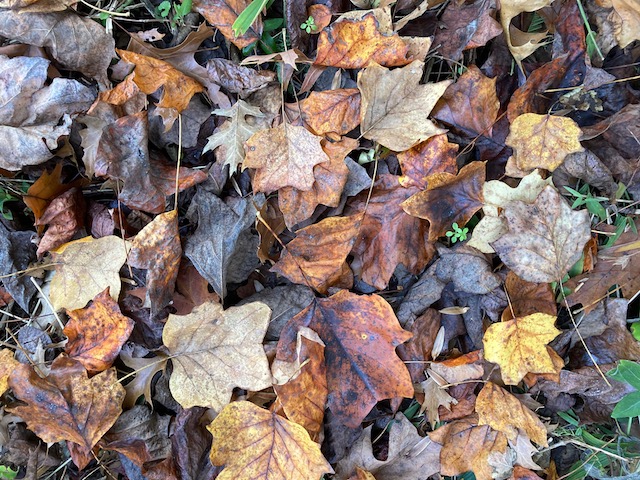
If you're interested in continuing your weekly or biweekly collection of local organic farm fresh produce through the holidays, now is the time to sign up for the Late Fall CSA, which begins the week of 11/15. To join us, sign up here.

How I Enjoyed My Harvest
A Tasty End to the Main Season
By Linda Dansbury
A Tasty End to the Main Season
By Linda Dansbury
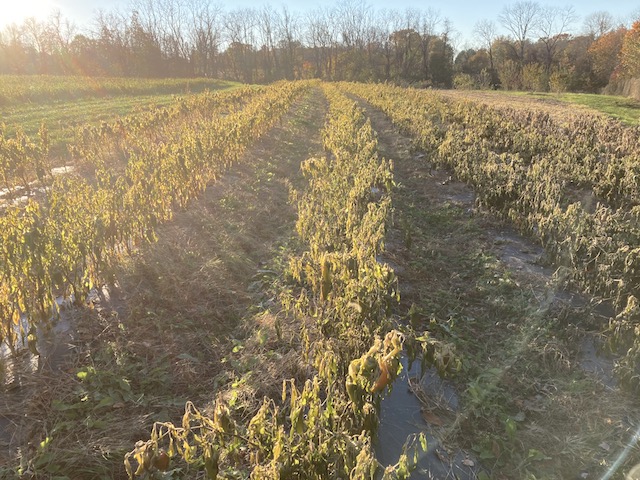
Sweet and hot peppers, last of the summer crops, could not withstand nighttime temperatures in the 20s. Expecting this, we harvested all the good fruit beforehand.
With my own yard work starting to be under control, I was able to to turn some of my time to cooking up delicious dishes! You will see I used a lot of winter squash - I typically don't cook it up until the weather starts to get cold because there are still so many other veggies to use.
Beets - I have mentioned the Chocolate Beet Cake in prior writings as suggestions for the beets, but haven't actually made the cake in awhile until this week - it is time consuming, but the end result is a moist, rich, delicious dessert, packed with beets. Yum...
Potatoes, sweet potatoes - one of my favorites of the fall is what I like to call "mixed mash". This time, we just did the 2 potatoes, but in the past I have added turnips, carrots and/or rutabaga. Made it for guests and they also loved the combination.
Potatoes, peppers, garlic, leeks, turnips, kohlrabi - roasted these delicious veggies and made a lot so the next night I had a delicious frittata. Due to the inclusion of sweet peppers, it almost seemed like a hash.
Bok Choy - made the Spicy Roasted Bok Choy - I just love this dish.
Bok choy, garlic, kale, peppers (sweet and hot), cauliflower - made a delicious stir fry. I tend to look these up on-line and find a sauce I want to make and then use whatever veggies and a protein.
Winter squash, hot pepper, onion and garlic - made a Vietnamese "pumpkin" soup - most of the rest of the world just uses pumpkin as the generic term for winter squash. For this very simple recipe, use ground pork (locally raised provides the best flavor), which you marinade in a bit of fish sauce, salt, pepper, and just a teaspoon of sugar. Saute onions and garlic and then add pork to brown. Add water and cook for a few minutes, add a good amount of cut up squash and simmer until the squash is tender. Top with chopped cilantro, basil and thinly sliced hot pepper.
Leeks, garlic, winter squash - made an Indian spiced soup. So good and warming.


